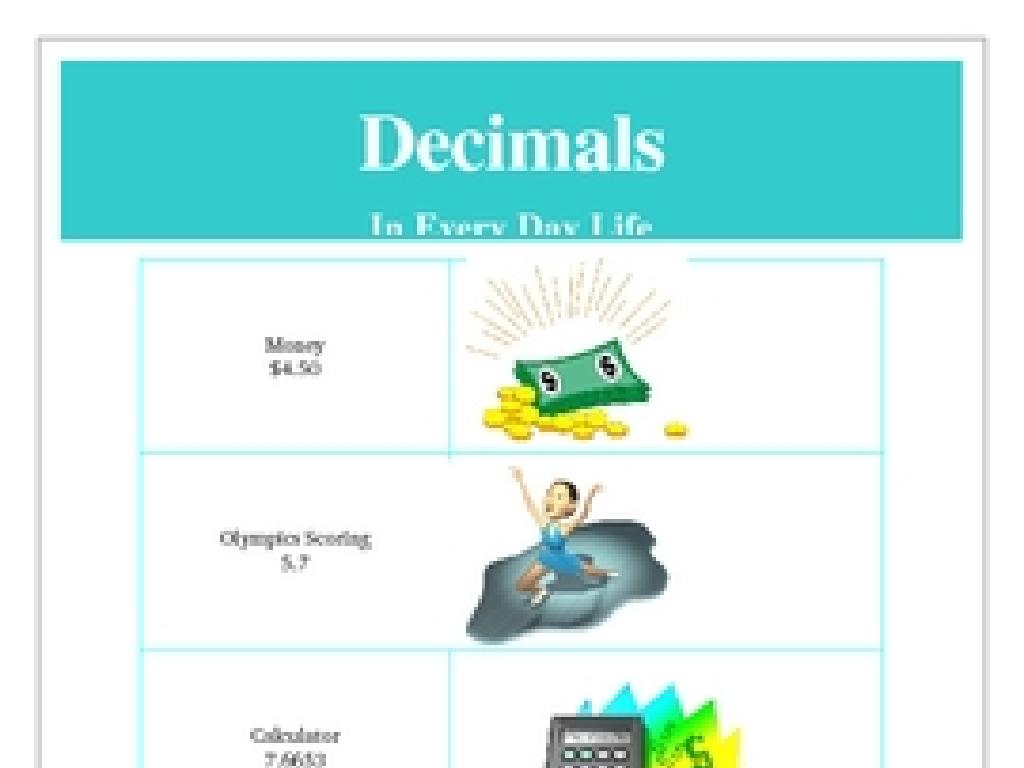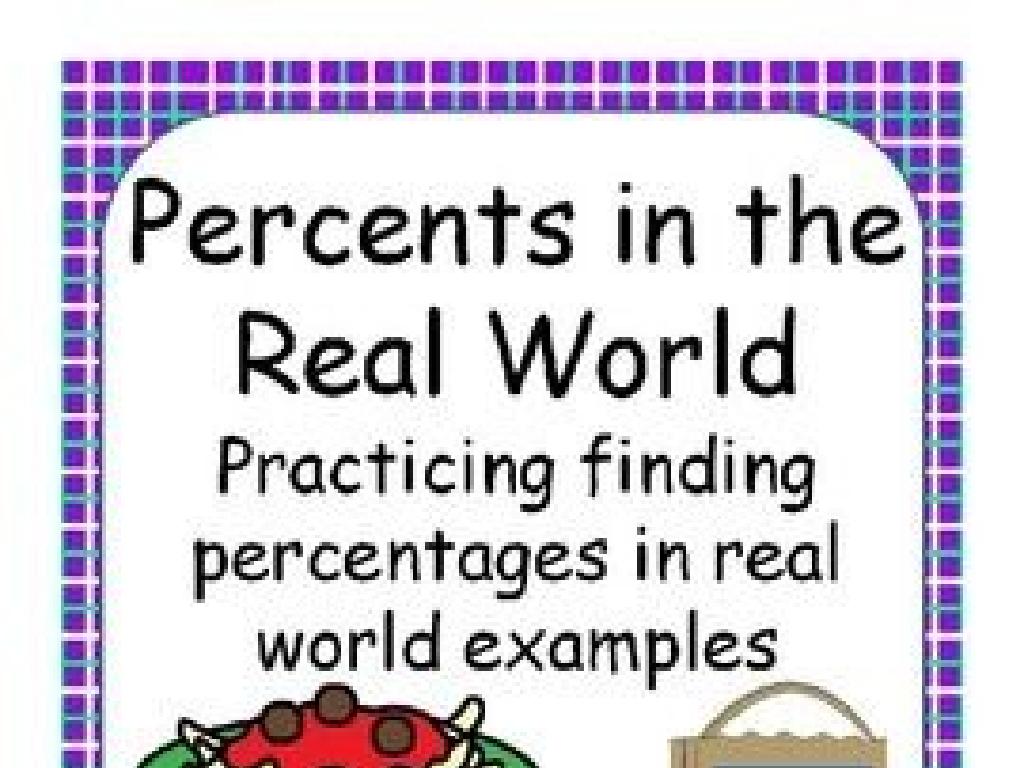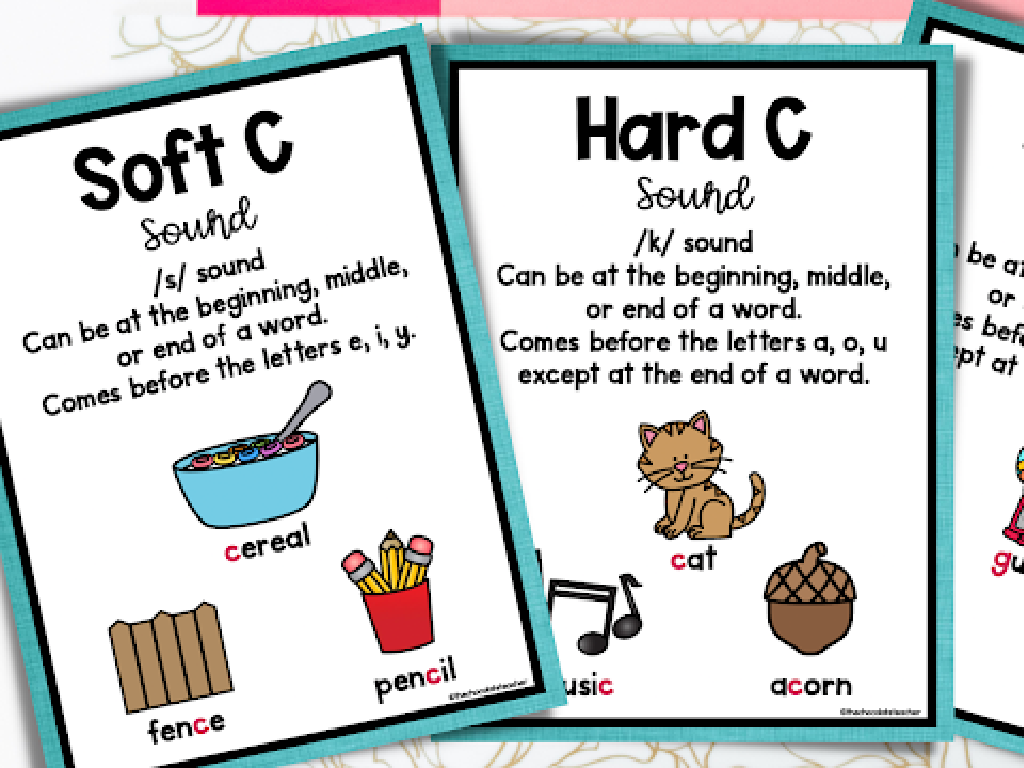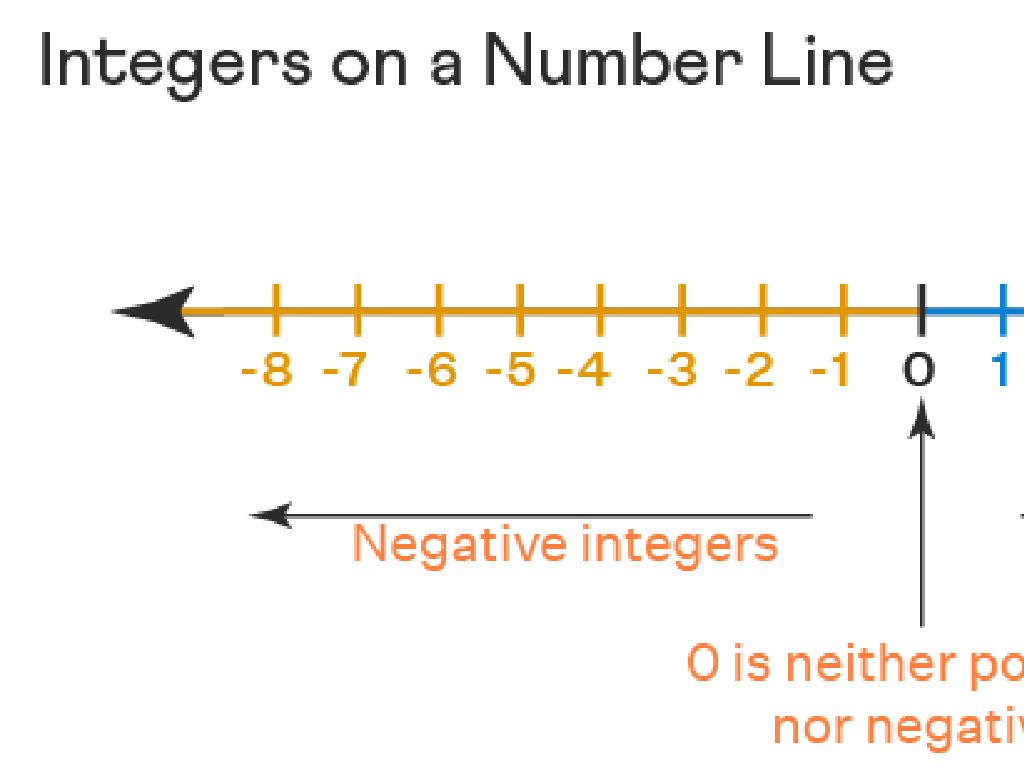Identify Rhombuses
Subject: Math
Grade: Fourth grade
Topic: Quadrilaterals
Please LOG IN to download the presentation. Access is available to registered users only.
View More Content
Today’s Focus: Identifying Rhombuses
– What is a Quadrilateral?
– A shape with 4 sides and 4 angles.
– Characteristics of a Rhombus
– All sides are equal and opposite sides are parallel.
– Comparing Rhombuses to Other Quadrilaterals
– Rhombuses have equal sides unlike rectangles.
– Class Activity: Find a Rhombus
|
Begin the lesson by defining a quadrilateral as a four-sided polygon, which serves as the foundation for understanding more complex shapes like rhombuses. Emphasize the unique characteristics of a rhombus, particularly that all sides are of equal length and opposite sides are parallel, which distinguishes it from other quadrilaterals such as squares and rectangles. Use visual aids to compare and contrast these shapes. For the class activity, provide students with various shapes and ask them to identify and color all the rhombuses. This hands-on activity will help solidify their understanding of the properties of rhombuses. Encourage students to explain why a shape is or isn’t a rhombus based on its properties.
What is a Rhombus?
– A rhombus is a quadrilateral
– All sides are equal in length
– Like a square, but angles aren’t 90 degrees
– Opposite angles are equal
– Just like your kite’s angles!
– Rhombuses in everyday objects
– Examples: Kites, diamonds on cards
|
A rhombus is a special type of quadrilateral with unique properties. It’s important for students to understand that while all sides of a rhombus are equal, unlike a square, the angles do not have to be 90 degrees. To help students visualize, compare a rhombus to objects they are familiar with, such as a kite or the diamonds on playing cards. Encourage students to find rhombuses in the classroom or at home to connect the concept to real life. Use physical models or drawings to demonstrate that opposite angles are equal, which is a key property of rhombuses. This will lay the groundwork for understanding more complex geometric concepts.
Rhombus vs. Square: Understanding the Differences
– Both rhombuses and squares have 4 sides
– All sides of a rhombus are equal in length
– Like a square, but angles can be slanted
– Squares have 4 right angles
– A square is a type of rhombus with all right angles
– Rhombuses don’t always have right angles
– A rhombus has angles that are not 90 degrees
|
This slide aims to clarify the differences between a rhombus and a square for fourth-grade students. While both shapes are quadrilaterals and have four sides of equal length, the key difference lies in the angles. A square has four right angles, making it a regular quadrilateral. In contrast, a rhombus does not necessarily have right angles; its sides are pushed over, creating an ‘angled’ or ‘slanted’ look. It’s important to emphasize that all squares can be considered rhombuses because they meet the criteria of having equal side lengths, but not all rhombuses are squares due to the angle requirement. Use visual aids to help students visualize the difference and encourage them to draw their own examples.
Properties of a Rhombus
– All sides are equal in length
– Opposite angles are equal
– Diagonals bisect at right angles
– Diagonals intersect at 90 degrees
– Diagonals are unequal in length
– Each diagonal splits the rhombus into two equal halves
|
This slide introduces students to the key properties of a rhombus, which is a special type of quadrilateral. Start by explaining that all sides of a rhombus are of equal length, which differentiates it from other quadrilaterals. Then, discuss how opposite angles in a rhombus are equal, another important property. Moving on to the diagonals, emphasize that they bisect each other at right angles (90 degrees), which means they cut each other in half and form four right angles at the point where they intersect. Lastly, point out that unlike a square, the diagonals of a rhombus are not equal in length. Provide examples of each property on the board and encourage students to draw their own rhombuses, labeling the properties discussed. This will help solidify their understanding of the shape’s characteristics.
Identifying Rhombuses
– Examining different shapes
– Spotting rhombuses among shapes
– Look for a diamond-like shape
– Characteristics of rhombuses
– Equal sides and opposite equal angles
– Practice identifying rhombuses
– Find rhombuses in a group of shapes
|
This slide is aimed at helping fourth-grade students recognize rhombuses by comparing them with other shapes. Begin by showing various quadrilaterals and then focus on rhombuses. Explain that a rhombus looks similar to a diamond and has four sides of equal length. Highlight that rhombuses also have opposite angles that are equal. Encourage students to observe these properties in different orientations. As an activity, provide a worksheet with a mix of shapes where students can practice identifying rhombuses. Discuss the answers as a class to reinforce learning. Remember to use simple language and examples that are relatable to fourth graders.
Rhombus in Real Life
– Find rhombuses around us
– Look for objects with 4 equal sides
– Examples: Kites and Diamonds
– Kites in the sky, diamond shapes in jewelry
– Rhombus-shaped Signs
– Road signs that caution drivers
– Understanding rhombus properties
|
This slide aims to help students recognize rhombuses in the world around them, reinforcing the concept that geometry is not just in textbooks but part of everyday life. A rhombus is a quadrilateral with four sides of equal length. Examples include kites, which have a rhombus shape when flying in the sky, and diamonds, often cut in a rhombus shape for jewelry. Even some road signs are rhombus-shaped to alert drivers to be cautious. Encourage students to look for other rhombus shapes in their environment and discuss the properties that make an object a rhombus. This real-world connection can make the concept more tangible and memorable for fourth graders.
Class Activity: Create Your Rhombus
– Gather sticks, clay, and colored paper
– Construct your own rhombus shape
– Ensure all sides are equal in length
– A rhombus has four sides of the same length
– Get ready to present your rhombus
|
This hands-on activity is designed to help students understand the properties of a rhombus by constructing one. Provide each student with sticks to form the sides, clay to connect the corners, and colored paper to fill in their shape. Remind them that a rhombus has four sides of equal length. Once the students have created their rhombuses, have them share with the class to reinforce their understanding and to practice using geometric vocabulary. Possible variations of the activity could include using different materials, creating rhombuses of various sizes, or decorating their shapes to highlight the equal sides and angles.
Review and Quiz: Rhombuses
– Recap: What is a rhombus?
– A rhombus has 4 equal sides and opposite equal angles
– Quick quiz: Find the rhombuses
– Look at each shape, does it have all equal sides?
– Submit your answers
– Discuss what we’ve learned
– We’ll talk about the different shapes and properties
|
This slide is designed to review the properties of rhombuses and assess the students’ understanding through a quick quiz. Start by recapping the definition and properties of a rhombus, emphasizing that all sides are of equal length and opposite angles are equal. Present a series of pictures with various quadrilaterals and ask students to identify which ones are rhombuses. After students complete the quiz, collect their answers for assessment. Conclude the session by discussing the quiz answers and reinforcing the characteristics that define a rhombus. This activity will help solidify the students’ knowledge and give them the confidence to identify rhombuses in the future.






